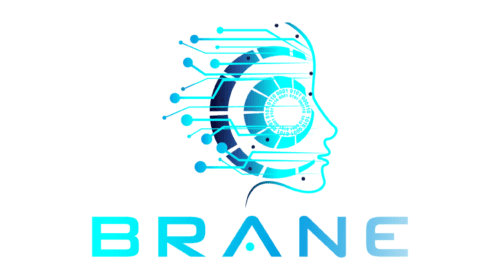In the future, history books will probably need several chapters to cover 2020. The world has been rocked by the many crises that appeared this year. Namely, the COVID-19 pandemic has affected the way we work and even after the virus moves on and life returns to “normal,” the way that we work will not return to the “normal” we once knew. However, this is a good thing, as the traditional way of working is being broken as technology allows for remote work, and the pandemic forced the mindset that, “Yes, employees can work from home and be just as or more productive than in the office or on-site.”
The author had the opportunity to speak to three tech companies that operate in the oil and gas industry and gain insights into what kind of safety measures are being taken to prevent the spread of the virus, from remote work to workplace health and safety monitoring, the sudden shift has been successfully embraced by many.
Workplace Safety
Due to the nature of the corona virus symptoms, which do not appear for up to 14 days, it is important to keep social distancing controls in place to prevent transmission. There are shift screenings in place at many job sites. “A table is created on the whiteboard with team member names across the top and also along the left margin. An employee is required during their workday to put a check mark in the cell that intersects with another person in the roster that they came closer than the six-foot recommended distance,” explained John Lindsey, President, InCite Logix, LLC. “At the end of the workday, the employee writes their signature on the right margin of the whiteboard in the row that has their name. The person in charge takes a picture with our software recording the image on the white board which gets stored permanently in the database. If there is a case of COVID-19 infection, then the photographs in the database can be examined for the last 14 days to determine the contacts that occurred and to notify the corresponding individuals per company protocols,” he continued.
Along with using software to keep track of peoples’ interactions, Genasys can integrate a worksite’s “systems with infrared cameras or other health safety sensors, broadcast automated voice warnings to symptomatic individuals trying to enter, and alert security personnel to prevent entry,” said Chris Keane of Genasys systems.
Due to the quick changes during the pandemic, Insite is able to quickly configure new systems. Lindsey said, “It will take less than a week to [get a new system] going. It takes 30 minutes for us to set up a database for a new customer. Then the customer can go in and build the inspection based on their paper inspection form. We will provide quick training online with our video tutorials and also on the phone with our implementation technicians via phone on an online meeting for free.”
International Travel and Worksites
Many onsite workers travel internationally to job sites and the biggest issue during the pandemic has been closed borders or lack of transportation options, which has led to workforce shortage in some countries. As policies change at a moment’s notice, companies such as Genasys can “deliver live or pre-recorded messages in any language to individuals entering the screening area. The messages could contain information regarding the health safety screening process and the documentation required to enter the facility or work areas,” said Keane.
Remote Work, IoT, Smart Staffing
One of the biggest outcomes from the pandemic is the global embrace of remote work to reduce the number of employees in the office or onsite to prevent further infections. Reducing staff generally has negative connotations because it usually means layoffs. In this instance, the context should be seen as the movement of worker from onsite to remote locations – specifically, working from home. However, Michael Skurla, CTO of BitBox USA asserts that, “IoT technology, when deployed appropriately, has the opposite impact.” He infers that the more technology that is used, the more jobs are created. “Collective data collections given to us by consolidated IoT platforms can additionally be used to support continuous commissioning methodologies to preempt downtime and support preventative service models. Hence, staffing reduction is better phrased as smarter staffing, limiting the need for time onsite, which certainly lowers OpEx. The telecommunications world has embraced this service style wholeheartedly given the swath of locations to manage and monitor. Simply put, there is no way to staff everywhere at once.”
Furthermore, COVID-19 is a catalyst, promoting working from home in more and more lines of business. While working from home days have been lures for many in the tech and IT fields, many other jobs can be done from home as the pandemic has taught us. We do not have to be in the office each and every single day to perform our work. Skurla supports this by saying, “The growth of cloud infrastructure has given us massive resilience to empower a remote workforce with security and scalability. This has grown with the reliability of our telecommunications infrastructure that enables connectivity globally. In this rough time, this infrastructure has given us the connectivity to continue on both socially and economically.”
For companies that have lots of office space, the move to remote work will include the economic incentive of selling off the office space. The return on remote work is two-way street, that benefits both employees and employers.”
Skurla goes on to highlight the benefits by saying, “Though everyone craves a return to normalcy, this has legitimized the ability to work from home for many. A progression that was already occurring and being accepted by more than a few companies. It allows a reduced footprint of office space and expenses related to this, [and enables] employees to spend more time working instead of commuting.”
Remote Work: New Norm
With many large companies such as NationWide, Facebook, Google, et al., announcing permanent work from home polices, it will be no surprise as other companies start to follow the trend. However, one big question arises, how will cities start to look as more companies move to remote work? What will happen to all the office spaces that are closed? What will become of the towering skyscrapers that used to beckon us to work every morning? These are some of the new challenges that will need to be addressed as we move into a new era of remote work, automation, and the use of IoT in the workforce.
Eissler, former editor-in- chief of Oil & Gas Engineering magazine, previously worked as an editor for Dubai-based The Oil & Gas Year Magazine.













